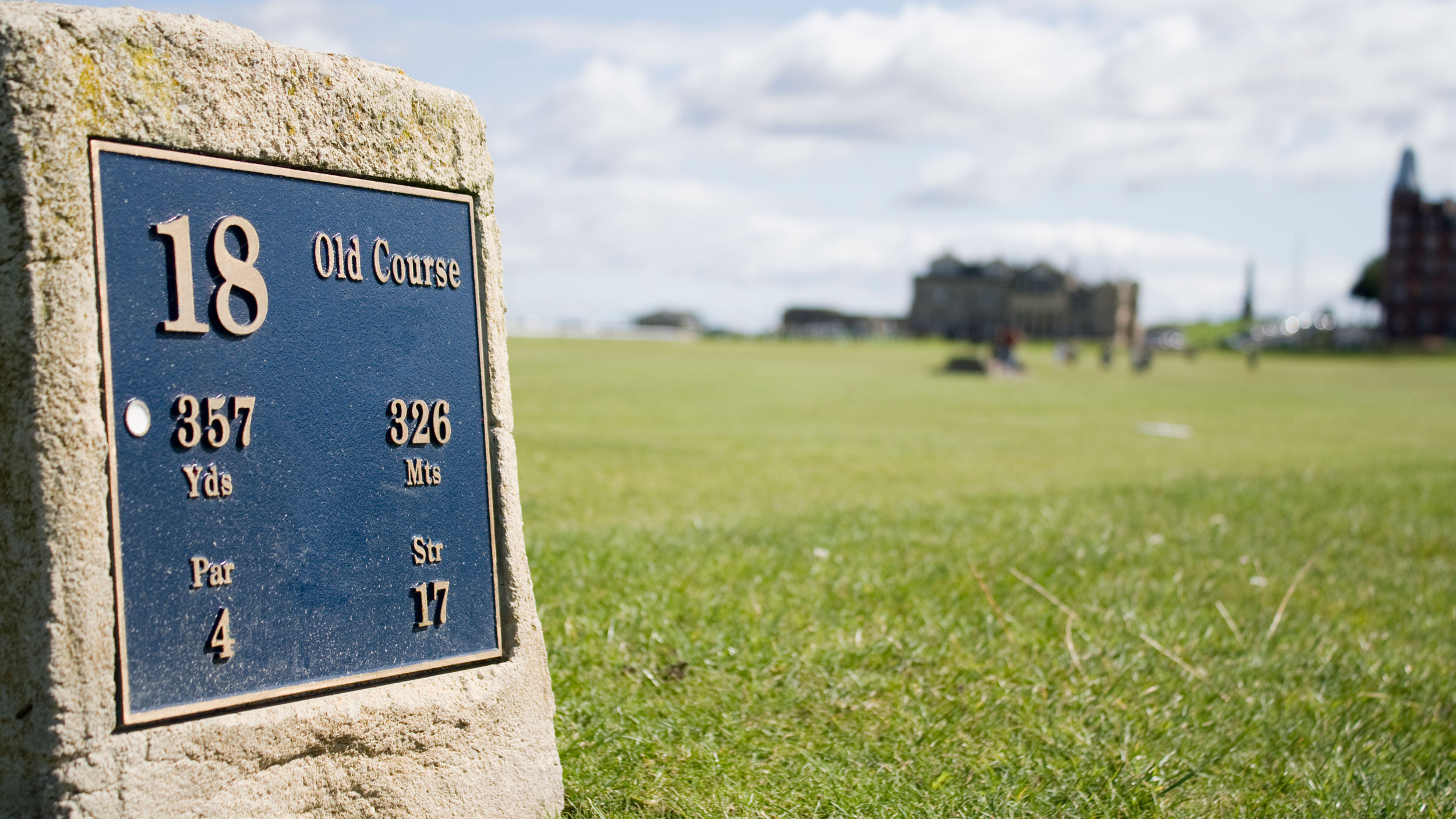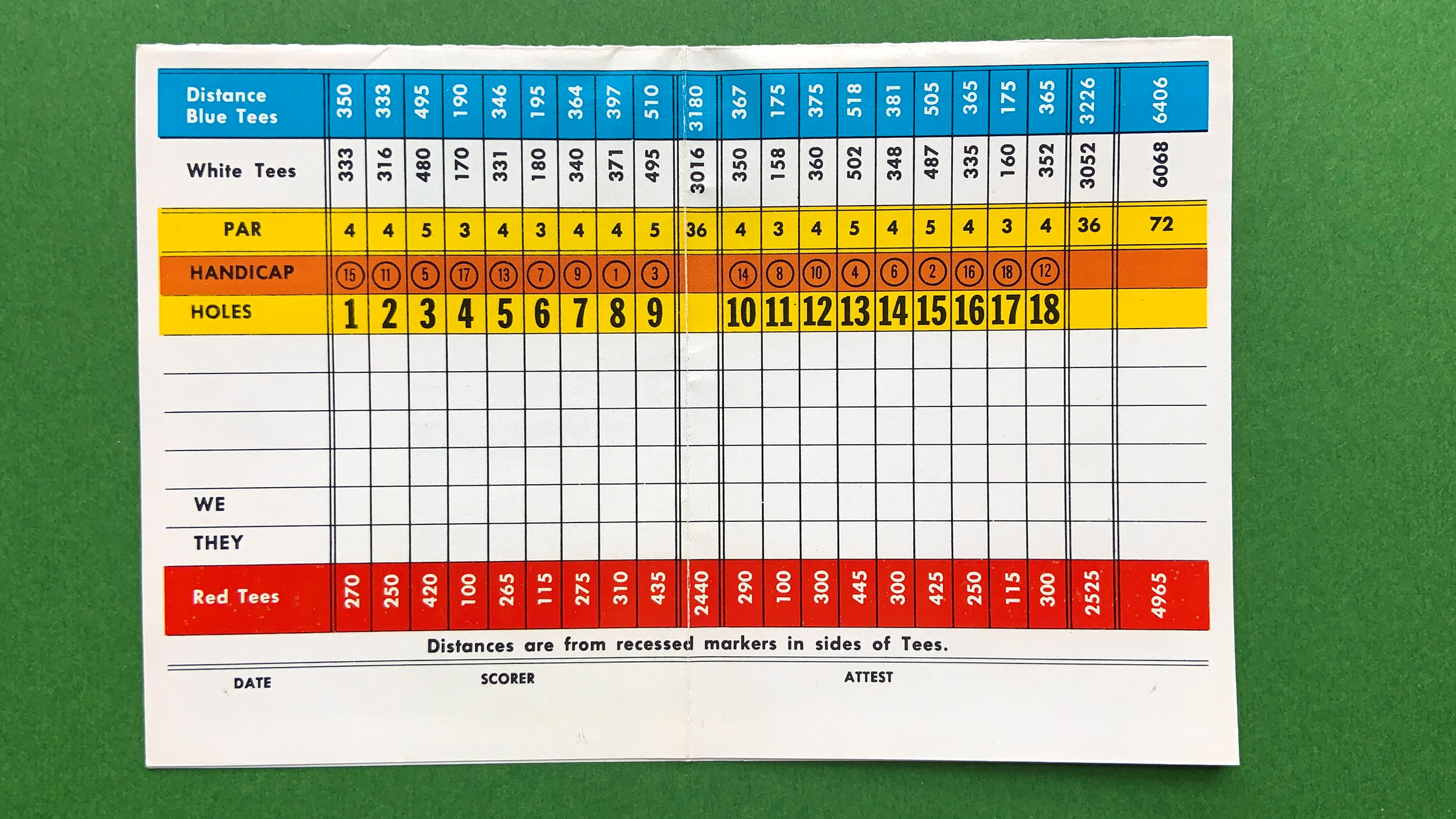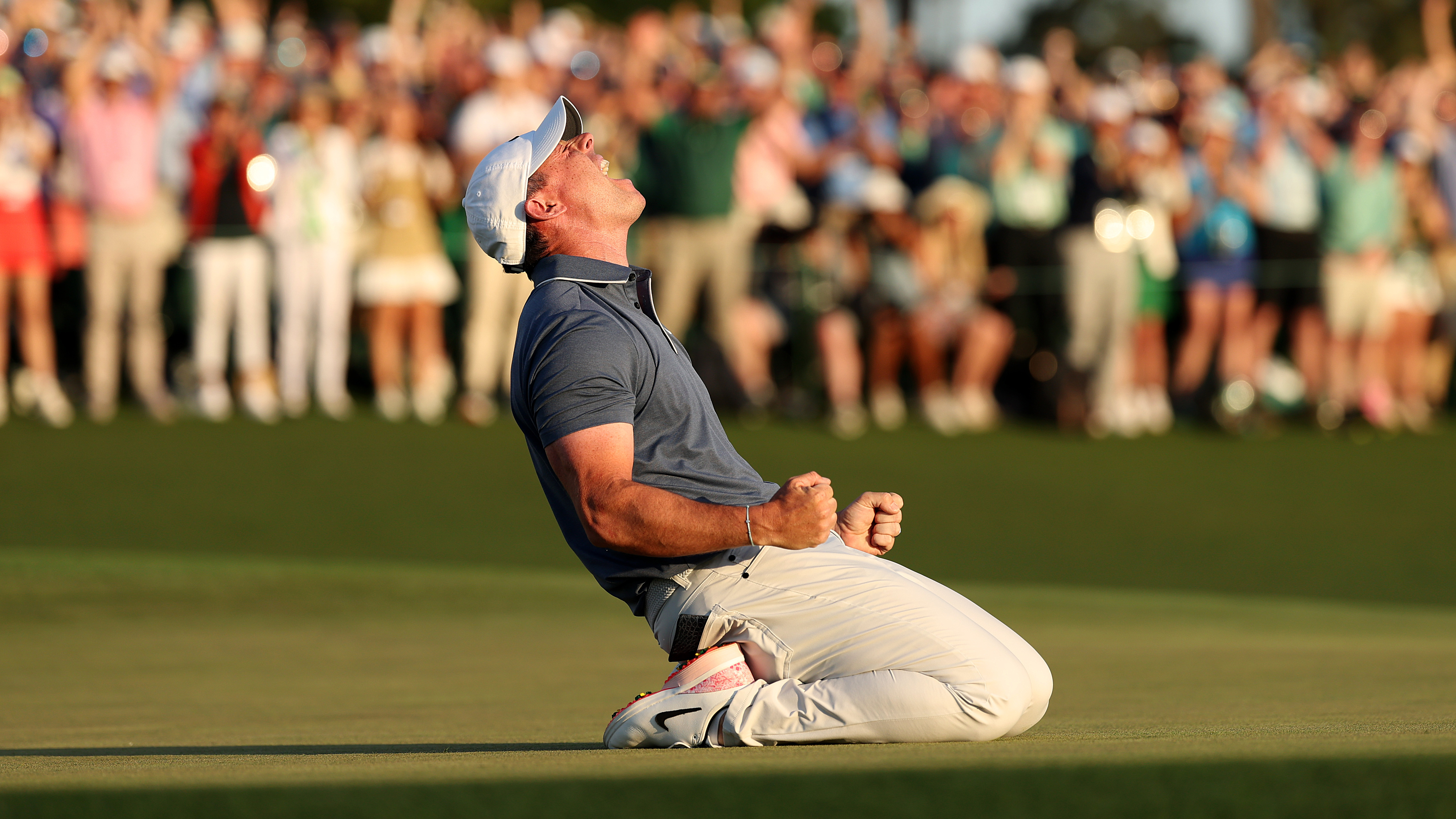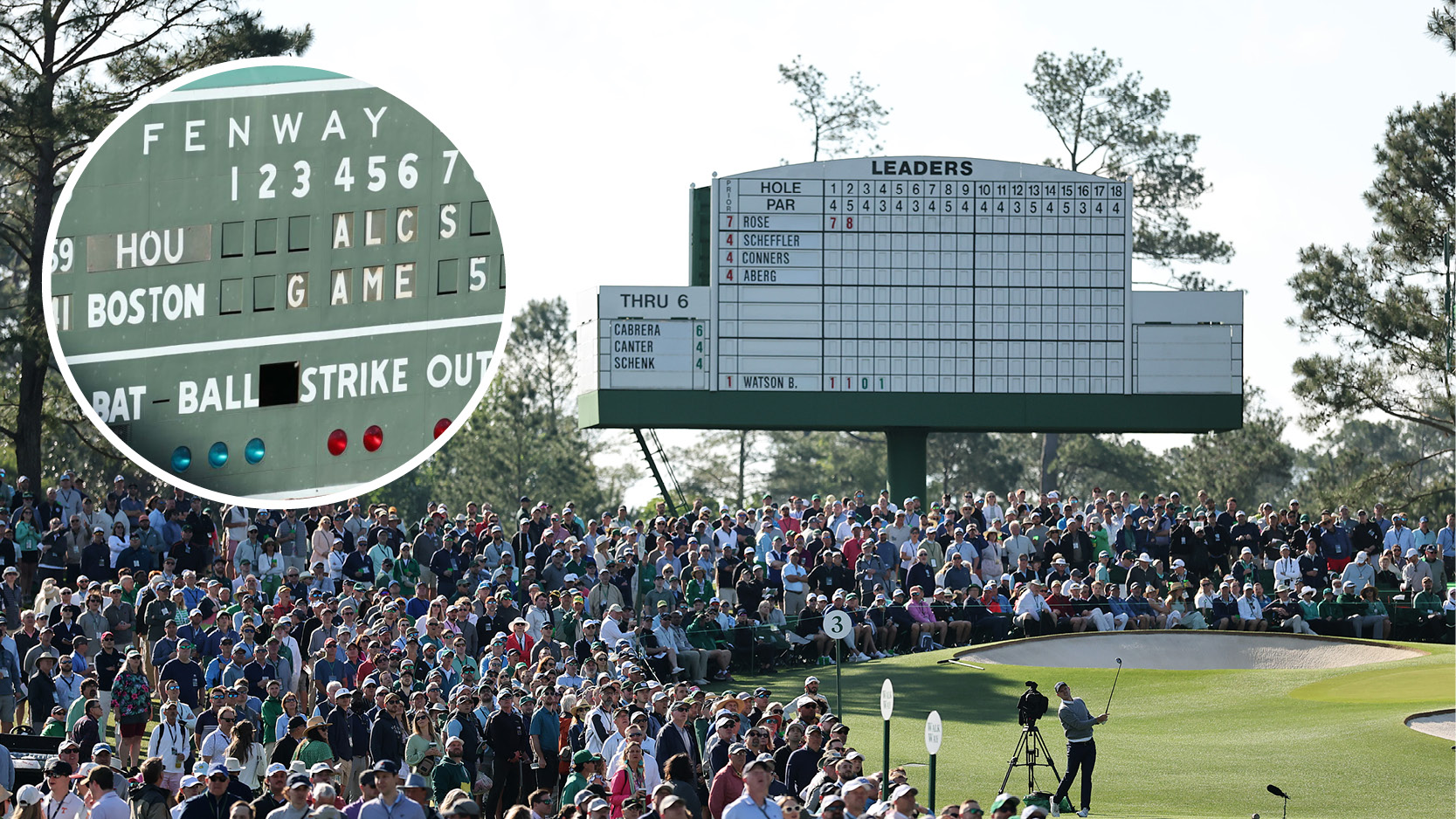Why Golf Courses Should Be Shorter (At Both Grassroots And Tour Level)
Fergus Bisset says an obsession with ever-longer courses is counter-productive and unsustainable at both elite and club level.


It’s all about distance these days – How far these guys hit it, how far we all hit it… Golf is obsessed by length. But golf isn’t about how far, it’s about how many. And, given golf is a sport or pastime, it’s also about entertainment and enjoyment. I think we’re barking up the wrong tree when it comes to distance. For golf to be less one-dimensional and more entertaining and enjoyable, at both elite and club level, I think golf courses should be shorter rather than longer.
At the highest level, golf tournaments seem stuck on the idea of making holes stretch on into the deep blue yonder. “How do we Bryson-proof this place?” Here’s a clue – don’t make it any longer. 650-yard par-5s and incessant, tiresome 500-yard par-4s play right into the hands of the bombers who will, understandably, continue to strive to hit the ball further, perpetuating the vicious cycle of “the distance debate.”
With shorter courses, or courses that play shorter, more golfers with different skill sets have a chance to challenge. As an example, take The Open Championship at Carnoustie in 2018 when the fairways were running so hard and fast that length wasn’t an advantage. Players were hitting too far, running into bunkers or burns so needed to play differently. Super-straight driver Francesco Molinari prevailed with his metronomic action. 60-year-old Bernhard Langer who was the shortest hitter in the field for the week, made the cut and finished tied 24th. Bombers find it harder to win when they can’t eliminate a percentage of the field with their power.
Of course, it’s rare for an event to be played on a fiery links as it was at Carnoustie that summer. But other tournaments, like those at tree lined Valderrama or always perplexing Riviera, show that to prevent length being the dominating factor in tour golf, holes need to be set up to reward accuracy and strategy rather than simply power. That means properly punishing bunkers at the 300-yard mark, fairways that run out at 285 and are lined by “real” rough, well-placed penalty areas, doglegs that can’t be cut – holes that demand precision, not only muscle.
I’m not saying tournament golf shouldn’t feature long holes, power is a skill that should be celebrated. I just think more variety is required. A tournament golf course can be around the 7,000-yard mark and still be extremely difficult with testing par-3s and strategic par-4s thrown in alongside the brutes. Follow up a 505-yard par-4 with a 345 yarder with well-bunkered fairway and a raised green surrounded by knee-high rough!

Shorter but with more variety
I also think every tournament should have at least one drivable par-4 to deliver excitement and opportunity. And I don’t mean drivable for Bryson and Rory, I mean drivable for the whole field… Add in a 310 yarder with a green surrounded by trouble, think the 10th at Riviera, and you get a supremely memorable hole on which anything can happen.
To maximise entertainment from tour-level golf I say make courses shorter but more varied and challenging to negotiate. Ask the players to show more course-management and greater precision, to demonstrate patience when required and power when possible. That will bring more, and different players into the equation rather than always reducing it to a bludgeoning contest.
Get the Golf Monthly Newsletter
Subscribe to the Golf Monthly newsletter to stay up to date with all the latest tour news, equipment news, reviews, head-to-heads and buyer’s guides from our team of experienced experts.
At recreational level, shorter golf courses also deliver more in terms of enjoyment and entertainment. Gunslingers, inspired by the professional “bombers,” love the idea of playing off the tips on a championship course until they get about a third of the way round. In reality, very few amateur golfers will enjoy golf more by playing off tees that are way back in the woods.
Shorter golf courses give the average player more chances for pars and birdies – more chances to get something out of their games. They allow older players, juniors, men and women to enjoy the game together on something closer to a level playing field. Shorter courses are more inclusive and more conducive to growing the game.
Then there’s the issue of slow play. It’s not always the case but, a super-long course often means a super-long day on the fairways. Many can’t spare five hours to slog round a sprawling behemoth of a golf course. A shorter, sweeter course generally means a shorter, sweeter round.

Shorter courses often take up less space
And shorter golf courses will normally take up less space. As we look towards sustainability in golf, less surface area requires less maintenance, less resource and less environmental impact. At a time when climate change is an issue central to every aspect of life, golf has a responsibility to do what it can to limit its own impact… Vast 8,000 yarders are not the way forward.
Golf needs shorter courses to counter distance’s position as the defining factor in elite golf. Shorter and trickier, not ever-longer courses can bring traditional golfing skills back to the fore. Such a change would feed down to grassroots golf, reminding the public of the joys of a shorter course – more playable for all, more sustainable, less tiring and quicker to get round.

Fergus is Golf Monthly's resident expert on the history of the game and has written extensively on that subject. He has also worked with Golf Monthly to produce a podcast series. Called 18 Majors: The Golf History Show it offers new and in-depth perspectives on some of the most important moments in golf's long history. You can find all the details about it here.
He is a golf obsessive and 1-handicapper. Growing up in the North East of Scotland, golf runs through his veins and his passion for the sport was bolstered during his time at St Andrews university studying history. He went on to earn a post graduate diploma from the London School of Journalism. Fergus has worked for Golf Monthly since 2004 and has written two books on the game; "Great Golf Debates" together with Jezz Ellwood of Golf Monthly and the history section of "The Ultimate Golf Book" together with Neil Tappin , also of Golf Monthly.
Fergus once shanked a ball from just over Granny Clark's Wynd on the 18th of the Old Course that struck the St Andrews Golf Club and rebounded into the Valley of Sin, from where he saved par. Who says there's no golfing god?
-
 Rory McIlroy Wins The Masters In Playoff To Complete Career Grand Slam
Rory McIlroy Wins The Masters In Playoff To Complete Career Grand SlamThe Northern Irishman battled past Ryder Cup teammate, Justin Rose to finally seal his first Masters title and become the sixth man to win all four men's Majors
By Jonny Leighfield Published
-
 Did You Know The Masters Leaderboard Was Inspired By Fenway Park?
Did You Know The Masters Leaderboard Was Inspired By Fenway Park?The Masters leaderboards are an iconic and historic part of the Augusta National Major, but did you know about its origins and how it operates today?
By Matt Cradock Published